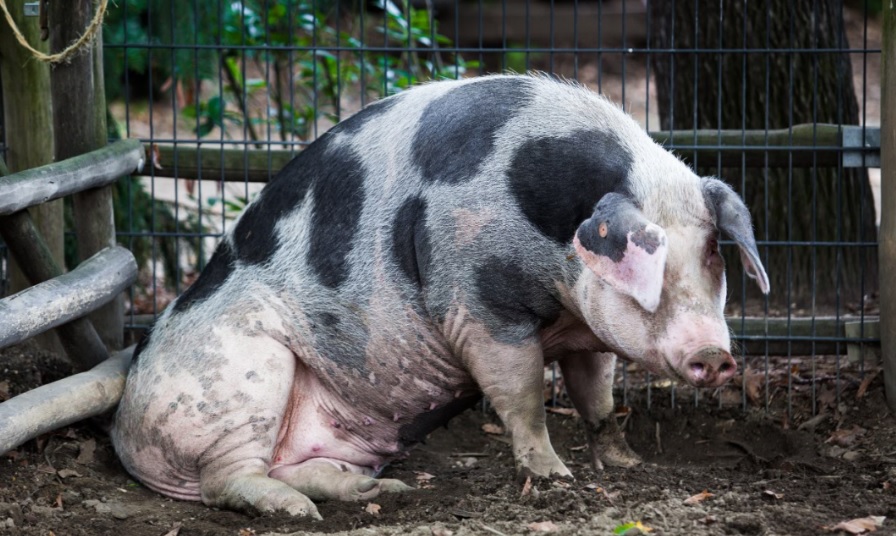Giving pigs the ability to digest more nutrients in their grains could help reduce the pork industry's environmental impact, says new research published in eLife.
Pigs are one of the most economically important meat sources in agriculture, with demand for pork products increasing continually. However, a large amount of their feed is wasted as they are unable to digest two of its key nutrients that cause environmental damage: nitrogen and phosphorus. Excessive amounts of these nutrients are subsequently released through the animals' manure into the environment, where they can pollute both air and water.
"Pigs release harmful amounts of these nutrients as they lack the microbial enzymes that break down phytate – the main source of nitrogen and phosphorus – and types of fibre called non-starch polysaccharides," explains first author Xianwei Zhang, postdoctoral researcher at the South China Agricultural University.
"We suggest that making up for the pigs' deficiency in these enzymes – β-glucanase, xylanase and phytase – will benefit the pork industry by increasing the animals' feed use and reducing their nutrient emissions."
To test this idea, Zhang and his team delivered the three enzymes into the genome of pigs. These enzymes, which are secreted by microbial communities, were optimised to adapt to the pigs' digestive tract environment. They were expressed specifically in the pigs' salivary gland, allowing the digestion of phytate and non-starch polysaccharides to begin in the mouth.
"Previous studies have shown that genetically modified pigs that release the microbial enzyme phytase from their salivary glands have significantly reduced levels of phosphorus in their manure," says senior author Zhenfang Wu, Professor at the South China Agricultural University. "The aim of our study was to enhance the digestion of feed grain in pigs to see if it lowered the release of both phosphorus and nitrogen from their manure."
The results of the feeding trials indeed showed that the pigs were able to digest these and other key nutrients, lowering their emissions as a result. The team also found that the animals' increased nutrient uptake led to a faster growth rate.
Furthermore, no negative side effects were reported in the pigs. Their mood, behaviour, reproductive capacity, blood physiology and natural biochemical processes remained unchanged.
Wu concludes: "The use of genetically modified pigs and other animals in food production, both in China and globally, is restricted by current policy. However, our findings indicate that these pigs are promising resources for improving feed efficiency and reducing the carbon footprint of the pork industry."
###
Reference
The paper 'Novel transgenic pigs with enhanced growth and reduced environmental impact' can be freely accessed online at https://doi.org/10.7554/eLife.34286.
This paper also has an accompanying Insight article, 'Pollution: Transgenic pigs to the rescue', which can be accessed at https://doi.org/10.7554/eLife.37641.
Contents for these articles, including text, figures and data, are free to reuse under a CC BY 4.0 license.
Media contact
Emily Packer, Senior Press Officer eLife
[email protected]
01223 855373
About eLife
eLife aims to help scientists accelerate discovery by operating a platform for research communication that encourages and recognises the most responsible behaviours in science. We publish important research in all areas of the life and biomedical sciences, which is selected and evaluated by working scientists and made freely available online without delay. eLife also invests in innovation through open-source tool development to accelerate research communication and discovery. Our work is guided by the communities we serve. eLife is supported by the Howard Hughes Medical Institute, the Max Planck Society, the Wellcome Trust and the Knut and Alice Wallenberg Foundation. Learn more at https://elifesciences.org/about.
Media Contact
Emily Packer
[email protected]
@elife
http://www.elifesciences.org
http://dx.doi.org/10.7554/eLife.34286





